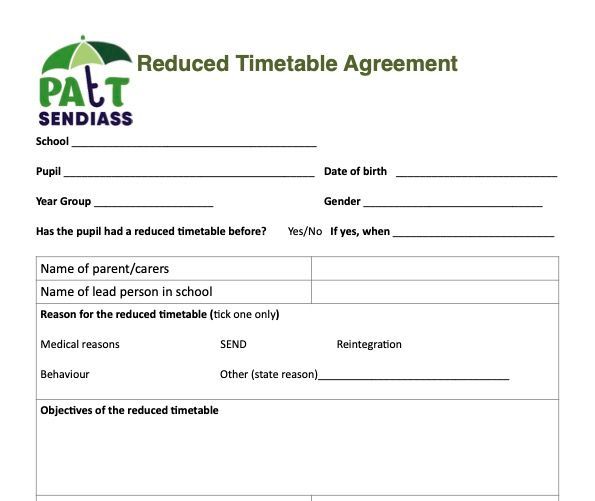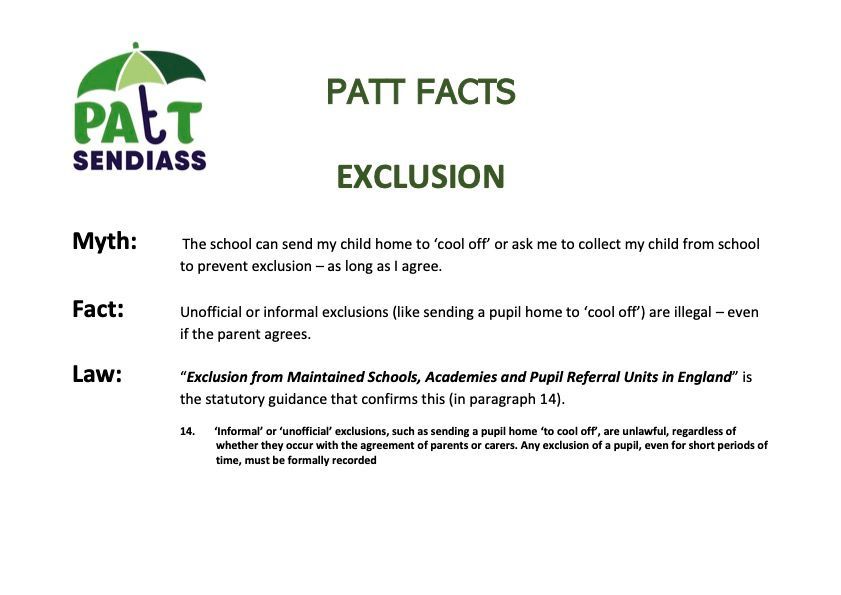Exclusions
What do I do if my child has been excluded from school?
If your child has been permanently excluded you can
email us or call the PATT Exclusion Support Line on
07711 749187.

What happens when your child is excluded?
Your child’s school will let you know about an exclusion as soon as possible. They’ll follow up with a letter telling you how long your child is excluded for and why.
You should also be told how to challenge the exclusion, should you want to.
Exclusions can start on the same day, but the school shouldn’t make you collect your child straight away.
For the first 5 school days of an exclusion, it is your responsibility to make sure your child isn’t in a public place during normal school hours unless there is a good reason.
You might be prosecuted if your child is found in a public place when they’re not supposed to be.



